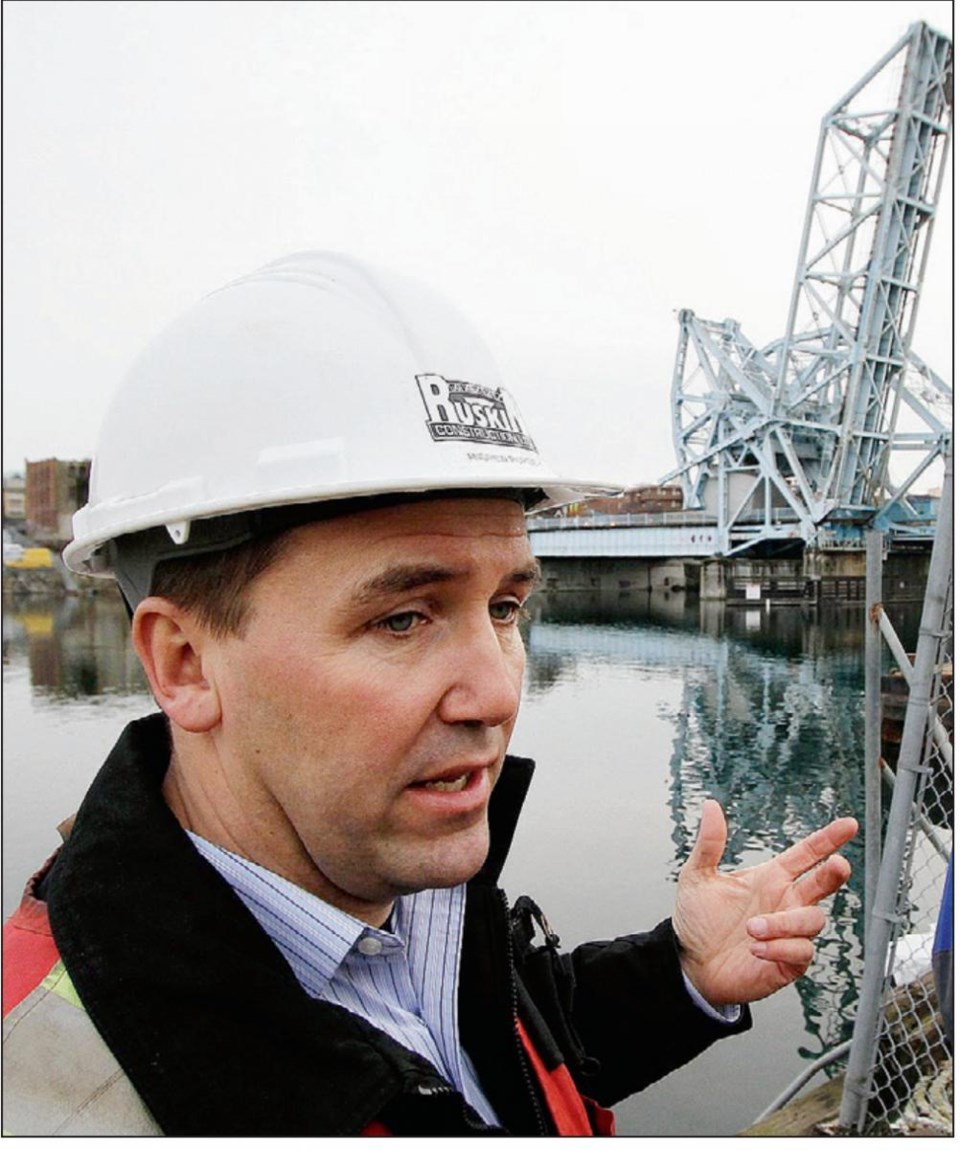Removal of the Johnson Street rail bridge - locked in an upright position since it was declared unsafe in the spring - will begin in earnest in six to eight weeks.
It'll be the first major step in clearing the way for construction of a new Johnson Street bridge.
There should be little impact to either marine or land-based traffic during the work, said Andrew Purdey, CEO of Ruskin Construction Ltd., which won the pre-construction contract with a bid of $1.8 million.
"From time to time, there may be an hour or two, but right now our plan doesn't have much in the way of traffic disruptions. The area is going to be fenced. The work is quite complicated and it requires a lot of precise engineering, so we're quite sensitive to keep the site isolated," he said.
The company and the city will stay in close contact with harbour users to keep disruptions to a minimum, he said.
Work generally will be done in a five-day week during daylight hours. At the peak, about 20 workers will be on site. About 18,000-man-hours of work are involved.
There'll be about a year of preparations, including the rail bridge removal, before construction of the new bridge begins in early 2013. It's scheduled to be finished in 2015. The vehicle portion of the bridge is to be open most of the time during construction of the new bridge.
Before the rail bridge comes down, likely in February, workers will relocate an underwater Telus telecommunications conduit, which is expected to take about six weeks, Purdey said.
The concrete counterweight will come down first. "Once the counterweight is separated from the main span and left on the deck, it will be demolished there," Purdey said.
He said dealing with the counterweight should be relatively straightforward.
Next, the span will be dropped to its horizontal position. A large crane will be used to lift the span onto a barge, a process that is expected to take three to four days sometime in February.
The barge will float the span to the nearby Ralmax site for dismantling.
"The structure has been condemned and will need some reinforcing. So we'll be reinforcing the structure" before the crane picks it up, Purdey said.
"A lot of things have to be right. There can't be excessive wind. There can't be excessive action in the area," Purdey said.
"The steel will likely end up being cut into pieces and shipped down to Seattle and put back into steel manufacturing once again," he said.
Ruskin Construction was the lowest of five bidders for the contract, coming in about $600,000 below the next closest bid on this phase of the $77-million Johnson Street bridge replacement project.



